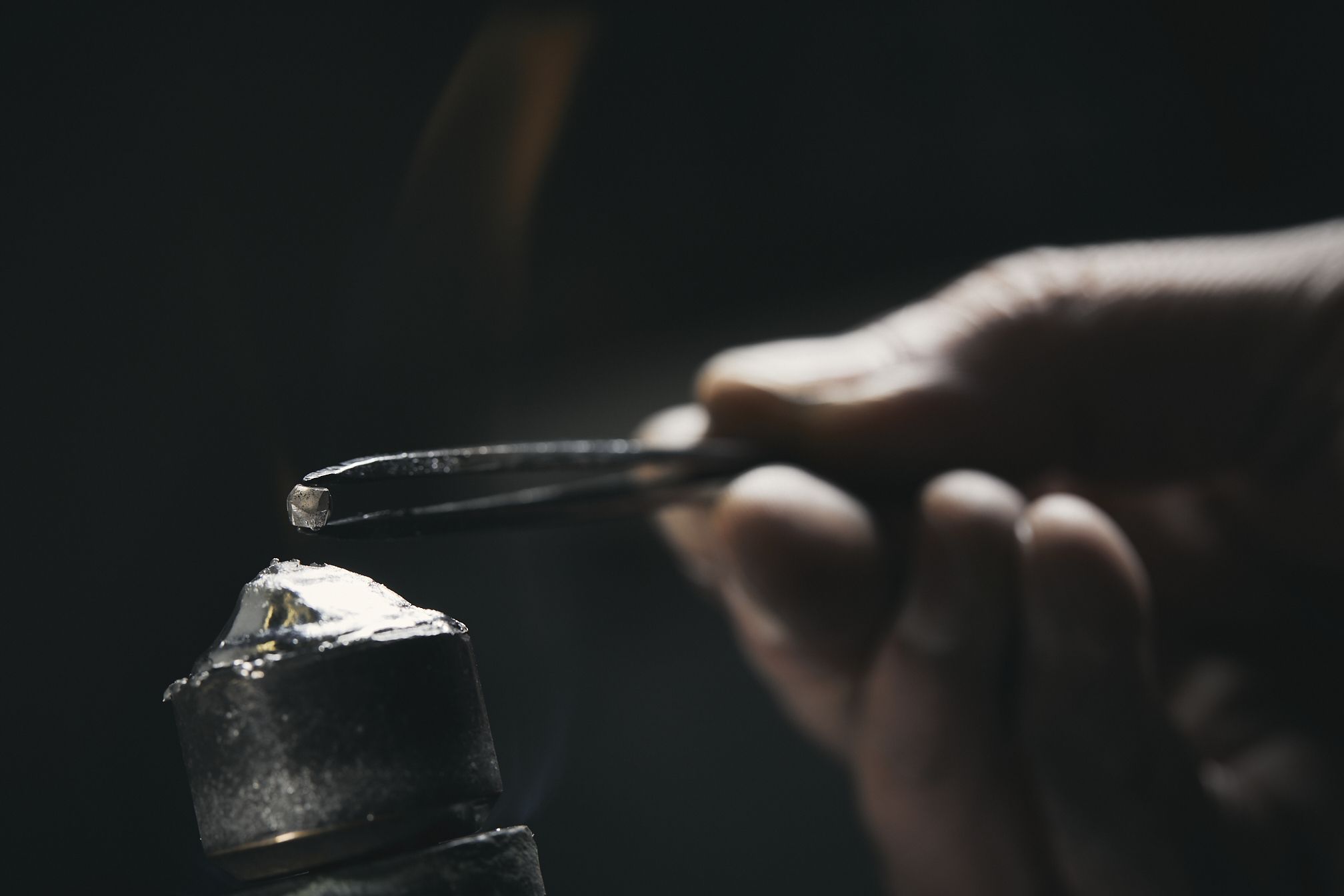Diamonds in industry
Diamonds are well known as a precious stone for, producing jewels, however this is not their only application.
In fact, thanks to their properties and in particular their hardness, diamonds are also an excellent material for some industrial processes.
What is a diamond?
A diamond is not only the precious gem that decorates an engagement ring. In fact, a diamond is scientifically pure carbon, one of the most abundant elements in the universe, but actually rare to be found in the typical composition of this precious stone. This is because the environment and physical conditions, necessary for the formation of diamonds, are very particular and occur sporadically. In fact, it is estimated that it took temperatures between 1,300 – 1,400° C, and pressures of roughly 70 tons/cm², at a depth of 200 km, for diamonds to form. Furthermore, variations in these conditions determine the higher or lower quality of diamonds, produced from a mine.
Since diamonds are pure carbon, they are formally considered an allotrope of graphite (a material that, unlike diamonds, is easily found in the earth). However, what distinguishes them is their cristalline structure, which is responsible for the physical diversity between diamond and graphite.
In diamonds, the carbon atom is hybridized sp3 and forms four bonds with four carbon atoms according to a tetrahedral structure, this makes the covalent bonds C-C very strong and makes diamonds the hardest material found in nature.
Characteristics of a diamond
Diamonds have some very peculiar characteristics that make them a precious material and usable in various applications.
Hardness
Diamonds are the hardest mineral known in nature, its Mohs hardness is equal to 10. This is due to covalent bonds extended to the entire structure and in all directions, which make its formation exceptionally cohesive and stable.
Diamonds, however, do not all have the same hardness, as this depends on the physical conditions in which they were formed. The hardest diamonds come from the New England area of New South Wales (Australia); this is probably due to the diamond growth, which took place in a single phase.
Conductivity
Diamonds are generally good electrical insulators, except for some blue diamonds that are great semiconductors. Their surface, under certain conditions exposed to air, has a conductive behaviour, due to the thin aqueous flim.
Diamonds, however, have an excellent thermal conduction up to about 2,500 W/mk, which allows them to dissipate heat during processing, such as mechanical machining.
Toughness
Toughness represents the ability of a material to absorb energy in the plastic field, that is, to undergo shocks without fracturing. The average toughness of a natural diamond is 3.4 MN m-3/2, but it can vary greatly depending on the carat and any imperfections present. This peculiarity of diamonds is further influenced by the plane in which the incident force is directed; as a result, a strong impact may be able to damage a diamond. For this reason, C2 offers a sharpening and repair service on all its tools, so as to consistently have a tool at its maximum efficiency.
Heat resistance
The resistance of diamonds to heat and fire is considerably high, but this feature depends mostly on its size. A common commercial diamond resists in the atmosphere up to about 1,520° C, but, vice versa, a fine diamond powder is easily flammable and tends to burn without leaving residue, transforming completely into CO2.
Diamonds for industrial use
As we have already mentioned, diamonds are not only used as a decoration for jewellery, but they are also an excellent tool for industrial processing, thanks to their unparalleled hardness. In fact, the diamonds chosen for industrial use are not those chosen as gems for jewelry, and often, in this case, a synthetic diamond is preferable to a natural one, as it will have a lower cost.
The industrial use of diamonds is mainly linked to their hardness, i.e. their wear resistance. In fact, this is a fundamental parameter for all applications where there is a mechanical interaction between multiple bodies. For example, tools used for drilling, cutting and grinding or for polishing precious metals, such as disk tools and posalux in C2 diamond.
Furthermore, diamond-tipped tools that have good thermal conductivity are also excellent for dissipating heat, generated during mechanical machining.
Diamond tools are not recommended for machining ferrous alloys, in fact at high temperatures carbon is very soluble in iron, and this leads to rapid wear of a chemical type.
C2 Diamond Tools
C2 manufactures any type of diamond tool for processing precious materials(gold, silver, platinum, aluminium, copper, bronze). Our tools are suitable for machining such as dressing, roughing, finishing and are available in both natural diamond and synthetic diamond. The use of diamond tools is particularly recommended for creating a mirror finish, because it is not necessary to polish or deburr the products and it is also excellent for those materials where polishing is not possible.


